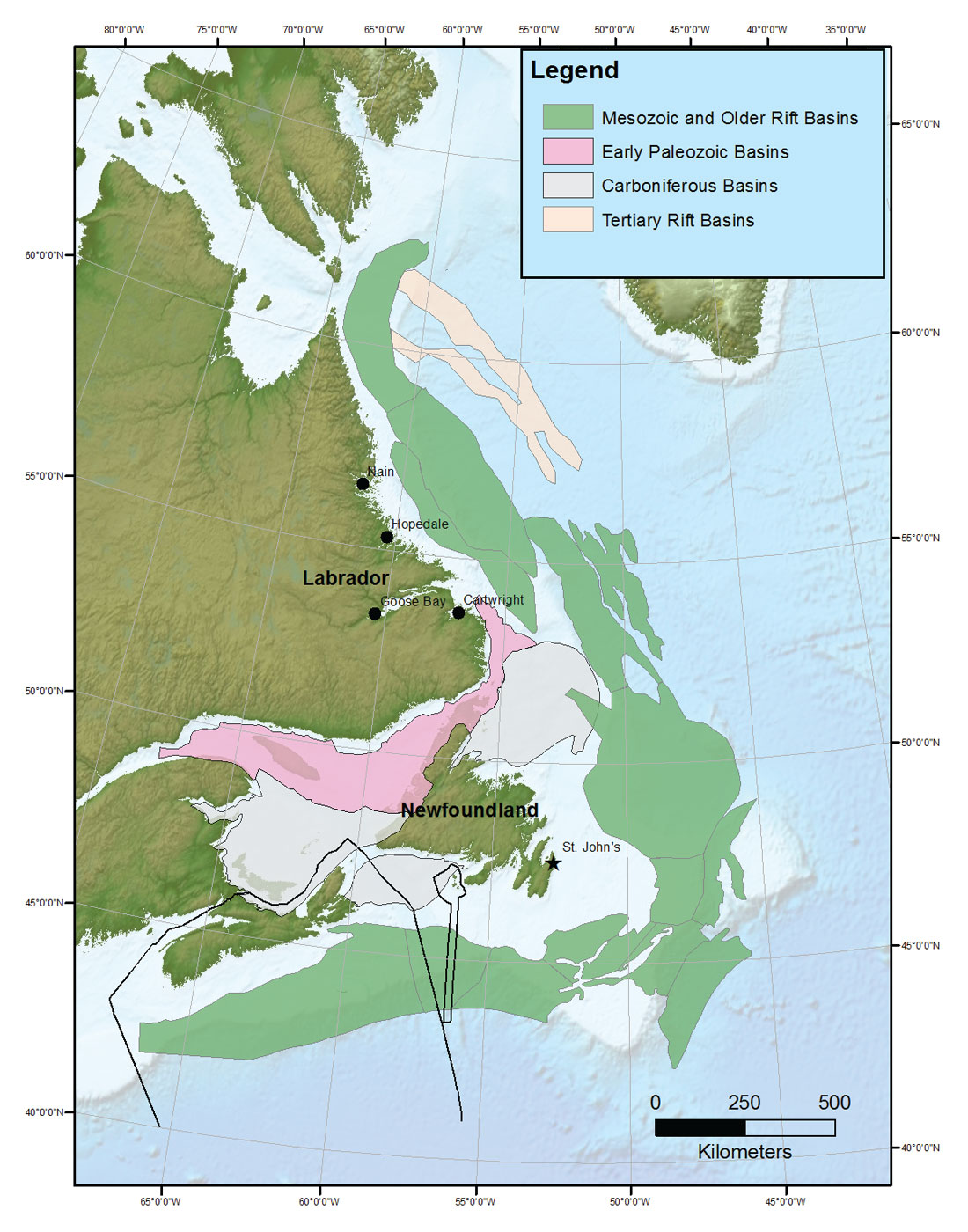This October 2015 issue of the RECORDER focuses on the Atlantic conjugate margins. Most of the basins of the margins of Eastern Canada are still under-explored despite ongoing production in some basins since the 1990’s. Exploration activity in Eastern Canada has recently been invigorated by Statoil and Husky’s success in the Flemish Pass Basin and by deep-water success in other Atlantic margins.
In 2014, the 4th Atlantic Conjugate Margins Conference was held in St. John’s Newfoundland. It brought industry personnel and academic researchers together to present their ideas on the stratigraphy and structural framework of the basins of the Atlantic margins†. The papers in this issue were inspired by themes and presentations at the conference. Selected papers address crustal thinning in the Orphan Basin, source rock potential of the Scotia Basins and the integration of rock physics with geopressure analysis.
The first article, “Evidence for Hyper-extended Continental Crust in the East Orphan Basin from Seismic Reflection Data and Potential Field Forward Modelling and Inversion” by Dr. J. Kim Welford of the Department of Natural Resources, Government of Newfoundland and Labrador, and Deric Cameron, James Carter and Dr. Richard Wright of Nalcor Energy Oil & Gas, provide us with new insight on the Flemish Pass/Orphan Basin where a thin crust underlies an area of Cretaceous fan deposition. The research inverted new gravity data and compares the results with modern, broadband seismic data.
The second article, “Source Rocks and Petroleum Systems of the Scotia Basins” by Ricardo L. Silva, Carlos Wong and Prof. Grant Wach of the Dalhousie University Basin and Reservoir Laboratory, presents source rock research in Eastern Canada which is the central element of any petroleum system and, most often, a key risk when exploring new frontier areas.
The third article, “Exploration in Frontier areas and Deep-Water Settings: Integration of Disciplines and Universality of Rock Properties” by Dr. Alsing Selnes of Selnes Geoscience Consulting, Dr. Alex Edwards, Dr. Sam Green of Ikon Science present some insights arising from the regional rock physics project off Newfoundland that was funded by Nalcor Energy Oil & Gas Inc. They show how universal rock physics models can be used to predict the elastic properties of both shales and sands of different ages and depths if uncertainties can be constrained and integrated into the models. These models utilize well data off Newfoundland and Labrador and compare them with data from analogues in Norway. The ultimate application of this approach is in frontier basins where well control is sparse.

Commercial discoveries such as Bay du Nord in the Flemish Pass are propelling an industry renaissance in the multi-disciplinary studies of plate tectonics, petroleum systems, and source rock mapping. Research activity is also accelerating on both sides of the Atlantic. Since 2007, the North Atlantic Petroleum Systems Assessment (NAPSA) has guided and supported researchers in Ireland and Eastern Canada to improve our knowledge of the petroleum systems of the Atlantic Margins. New data on both sides of the Atlantic have provided researchers with new insights and facilitated regional studies in plate reconstruction, source rock geochemistry, regional geopressure and rock physics trends. Results of these studies are helping industry to de-risk their exploration programmes.
New industry investment and new research studies have resulted in resurgence of exploration activity for Eastern Canada, as more and more companies are awakened to the future potential of this vast, under-explored area.
Nalcor Energy has been partners on recent studies over the past few years and the finalized studies can be viewed and downloaded from our webpage**.
†www.conjugatemargins.org/wp-content/uploads/2013/12/ACM-Abstracts-Volume-Final.pdf
* Website for all abstracts from the 2014 Conjugate Margins Conference held in St. John’s, Newfoundland, August 2014.
**Nalcor Energy Exploration website: www.nalcorenergy.com/exploration











Join the Conversation
Interested in starting, or contributing to a conversation about an article or issue of the RECORDER? Join our CSEG LinkedIn Group.
Share This Article